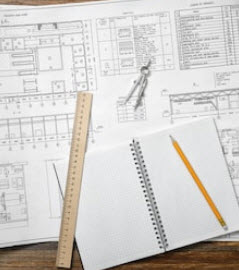What is a Mechanic’s Lien?
A mechanic’s lien, also commonly called a materialman’s lien, is a lien on a property for materials supplied for a construction project or other improvement. This type of lien provides protection for a party who supplies the materials used during a project or who performs work under a general contractor. Typically, a subcontractor or supplier will use a materialman’s lien to recover money owed to him or her. For instance, say you recently had work done in your kitchen. You had new cabinets installed, for which you paid the general contractor who was supposed to pay the sub. However, the general contractor ended up bailing out on the project and skipping out on the subcontractor. To recover the money owed to him or her, the subcontractor places a mechanic’s lien on your property.
However unfair this may seem, you may, unfortunately, be forced to pay twice for work performed on your home or building. Failure to do so may result in you being forced to sell your property to repay the injured party. You can prevent this type of headache by understanding how mechanic’s liens work and what you can do to avoid them.
How Mechanic’s Liens Work
To file a mechanic’s lien, an injured party is generally required to follow a strict procedure. The steps for following such a lien are as follows:
- The injured party must not have contracted directly with the homeowner and have provided the homeowner with notice of what was being contributed within 20 to 30 days of the contribution (for instance, the installation of the cabinets);
- Once the injured party realizes he or she is not going to get paid, he or she must file a “claim of mechanic’s lien” in the district in which the property is located; and
- The party then has up to six months to work with the property owner to either come up with a solution or file a lawsuit.
If the injured party does not take decisive action within the allotted time frame, nothing can or will come of the lien in the future. However, you should still take measures to clear your property of the judgement, otherwise you may face difficulties if you try to sell it in the future.
How to Avoid a Mechanic’s Lien
There are a few different ways you can avoid the headache that comes with a mechanic’s lien. The first option is to pay with joint checks. To ensure all involved parties get paid, make the checks out to both the subcontractor and the general contractor. This way, the only way either party can cash them is if the ultimate payee authorizes it.
The second way to avoid a materialman’s lien is to have the general contractor get a lien waiver from all subcontractors and suppliers. A third way to avoid a lien is to pay the suppliers and subcontractors yourself. This is probably the most effective way to avoid payment headaches altogether. However, it is also the least favorable, as general contractors generally like to be in charge of disbursement. Moreover, when you pay subs and suppliers directly, you look like the employer, which could make you inadvertently liable for tax withholdings, Social Security, and the like. To avoid this type of ambiguity, we recommend trying option one and two first.
Work With a Alabama Real Estate Law Attorney
If you plan on contracting out a substantial amount of work on your home, an investment property, or commercial building, the best thing you can do is cover your bases ahead of time. Retain the help and knowledge of a Alabama real estate law attorney to draft up the appropriate contracts and implement effective safeguards. Contact Cloud Willis & Ellis today to get started.
Resource:
law.cornell.edu/wex/materialman%27s_lien


